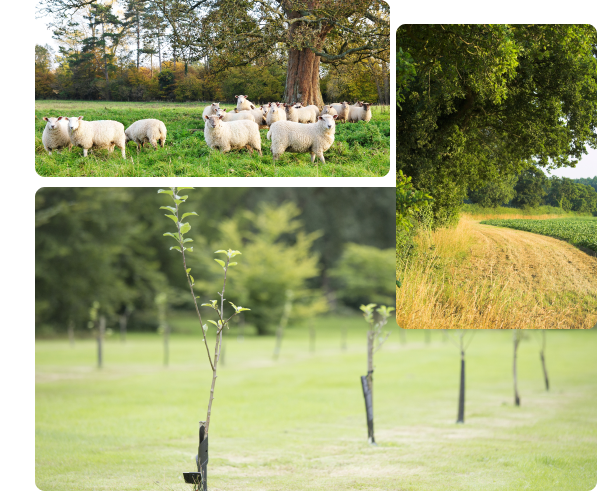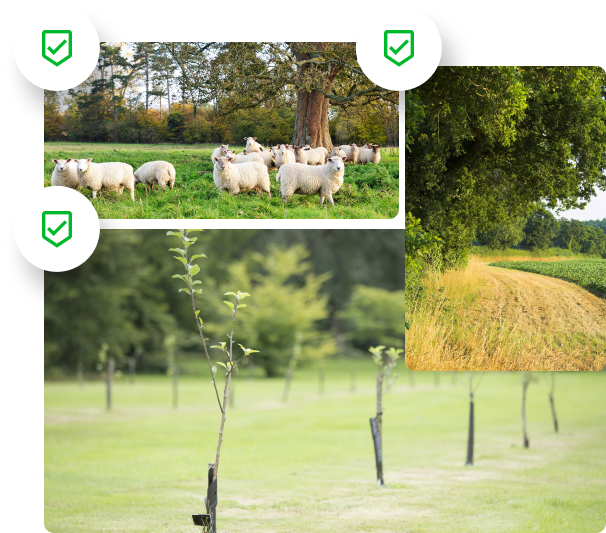Getting started with carbon credits
Carbon credits and biodiversity tokens provide farmers with potentially significant new income streams. Aligned with an effective natural capital market, they can unleash a seismic improvement in the prosperity of the industry.Agriculture, Forestry and other land use sectors are critical to helping the world meet its ambitious climate change targets. Farming offers huge potential due to its large capacity to sequester carbon in biomass and soils. The industry is therefore centre stage in trading carbon credits, as many companies and individual investors want to compensate and neutralise their emissions by buying credits that protect the environment.
As a farmer, to get carbon credits, you must decrease your carbon footprint on farm by taking action that cuts emissions or increases sequestration, and you have to be able to prove it with evidence in the form of data. You can generate credits continuously as long as you set baselines and carry on reducing your net carbon balance.
Sandy, as your digital assistant, supports you in exploring a range of mitigation strategies to reduce your carbon footprint. The digital assistant will help you reduce your costs overall and aggregate the credits across the farm. Through Sandy, you get high quality credits at top prices and have access to the widest possible demand in the natural capital market.

Seven steps to generating income from your natural capital.

Step 1: Eligibility
Firstly, learn to love your farm data and digitise it. You can upload data to Sandy through your farm management system, like Gatekeeper or Muddy Boots, through Excel spreadsheets, or manually. Sandy accurately measures the environmental performance of your farm – covering carbon, biodiversity, and water protection.
With your carbon footprint, Sandy helps you plan improvements. To be eligible for carbon credits, you have to decrease your carbon footprint, but you don’t need to reach net zero to get started.

Step 2: Set the Farm Baseline
The baseline summarises exactly where your current farm practices have placed you on annual emissions. It is important because any reductions from this starting point will generate credits. Setting the baseline will include mapping your field boundaries to provide accurate information on what land you have and its current condition. Historical management information is important to determine your baseline and Sandy ensures your reporting is realistic and credible.

Step 3: Explore and schedule practices
Consider the options Sandy provides you to improve your farm’s environmental performance and develop a plan going forward. For example, if switching from conventional to sustainable farming, what actions are required? If you want to aim for net zero in a given timeframe, what actions should you take.
Make your own plan or use Sandy to recommend the optimal path for your enterprise. Sandy shows you the cost, efficiency and yield projections of the chosen plan.

Step 4: Check the results
Based on the practices and timescales you choose, see what this plan would achieve in carbon credits, your yield and income. Certain businesses perform so well with their environmental work that they can increase the value of carbon credits through co-benefits, which recognise biodiversity gains or water protection work on your land. An additional market is emerging for individuals and companies to purchase tokens as well, rather like a voucher scheme, for consumers to enjoy the natural environment that is being nurtured.

Step 5: Sign the contract
Once you have accurate data, evidence of your carbon and biodiversity actions and a forward plan, you can begin preparing contractual arrangements with Trinity NCM and exploring your NCM dashboard. This provides all the key metrics you need to evaluate your performance and move forward.There are different contract terms depending on whether you are the farm owner or tenant, whether you are forward contracting or spot trading.

Step 6: Implement and verify practices
Once the contract is agreed, you can begin to implement the practices you planned within the timescales you chose. A carbon footprint is carried out each year to continue measuring your net carbon balance and confirm the carbon credits are being generated. Third party auditors will look at your evidence, then verify and confirm your credits.

Step 7: Get rewarded
There are three ways to sell your carbon credits:- sell on the open NCM marketplace by setting a minimum price and waiting for the bids to come in;
- sell to corporate investors, a pre-qualified buyer, who tend to set the price and criteria themselves, or
- use the credits to sell or barter with businesses you already have a relationship with such as processors, retailers or other land managers.






